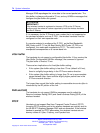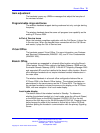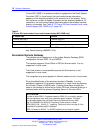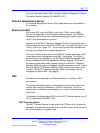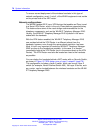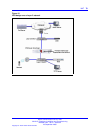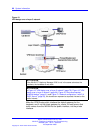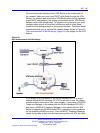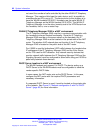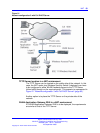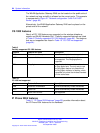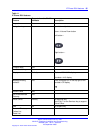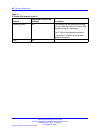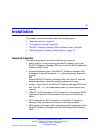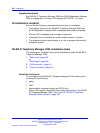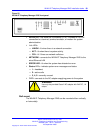
82 System information
not count the number of calls controlled by the other WLAN IP Telephony
Manager. This creates a blind spot for each device, and it is possible to
oversubscribe an AP by up to 2:1. The best solution to this problem is to
have the WLAN Handsets 2210/2211 handsets use the same WLAN IP
Telephony Manager as the WLAN Handset 2212 (VPN). This WLAN IP
Telephony Manager is on the other (remote) side of the VPN Router from
the handsets, that is, over a routed hop.
WLAN IP Telephony Manager 2245 in a NAT environment
The IP Telephony Manager 2245 must be in constant communication with
the handsets to ensure handset functionality. Since the IP Telephony
Manager 2245 must be on the same subnet as the handsets, the IP
Telephony Manager 2245 must be located on the private side of the NAT
router. The wireless VoIP network does not function if the IP Telephony
Manager 2245 is located on the public side of the NAT router.
Port 10000 is used for bidirectional UDP traffic between the handset alias
IP addresses of the IP Telephony Manager 2245 and the Echo Server
on the TPS used for NAT detection. Any network security devices that
monitor network traffic between the IP Telephony Manager 2245 and the
Signaling Server(s) must be configured to allow traffic using port 10000 to
pass freely between these devices.
DHCP Server location in a NAT environment
The WLAN Handsets only support Full DHCP. The device acting as a
DHCP Server to the WLAN Handsets must be configurable to send the
vendor-specific DHCP fields.
In some cases, the NAT router acts as the DHCP Server. In this case,
configure the NAT router with the required DHCP parameters and
necessary information.
If a separate DHCP Server is used, it must be located on the private side
of the network. See Figure 21 "Network configuration 3 with Full DHCP
Server" (page 83) for more information.
Nortel Communication Server 1000
WLAN IP Telephony Installation and Commissioning
NN43001-504 03.04 Standard
23 September 2008
Copyright © 2004–2008 Nortel Networks
.



